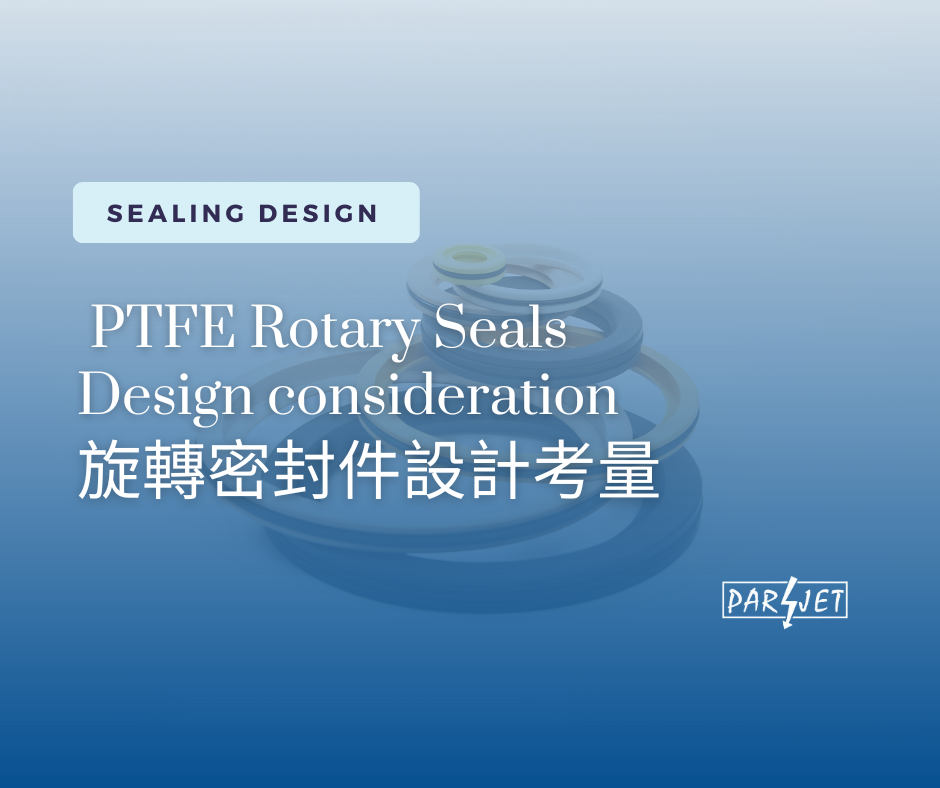When choosing and designing the right rotary seal, thorough consideration is required. It doesn’t matter if it is metal cased PTFE rotary lip seals or spring energized seals with canted coil springs, seals in all kinds of form should go through in depth thought process. One thing that differentiates rotary and reciprocating applications is the concentration of the stresses. For rotary sealing applications, the stress will be concentrated in a specific contact area where localized heat, wear and friction can accelerate the wear of the seals.
There are several factors that can influence the sealing performance, including groove, hardware design, operating conditions, and seal design. Therefore, it is essential to understand those factors in detail to select and build the right sealing solution for your application.
Factors that influence sealing performance:
- • Pressure vs. Velocity (PV limit)
- • Leakage vs. Torque
- • Hardware Design
- • Material Selection
Pressure vs. Velocity (PV limit)
When selecting the right seal for your application, media pressure and surface speed are the key to the decision.
The PV value represents the combination of pressure and speed one seal can bear. When the tolerable speed increases, the tolerable pressure will decrease. The PV limit represents the combination of the maximum speed and pressure a seal can withstand under light to normal wear. When the PV exceeds the limit, the seal will wear excessively and cause the sealing performance to fail.
Based on different seal design concepts, each form has its own corresponding PV limits. For instance, metal cased PTFE rotary Lip seals – HiPerLip® are suitable for low pressure and high speed whereas the Spring Energized Seals – HiPerSeal® are more applicable for high pressure and low speed environments.
Leakage vs. Torque
Seals should have minimal movement in the hardware gland. Seal rotation can cause inconsistent torque, higher friction and wear which results in potential leakage through the seal OD. Rotary seal designs are a balancing act between friction (torque) and seal performance (leakage). Higher torque produces better sealing performance, but it can also lead to higher wear and lower sealing life. Conversely, lower torque reduces friction and longer sealing life but may have a higher leakage potential. Our engineering team will advise you with the most optimal design that minimizes both the leakage and torque.
Hardware Design
The roughness and hardness of the shaft surface are important to a rotary seal performance.
A smoother surface allows better sealing performance by reducing wear and increasing sealing life. Whereas a shaft with high surface roughness will cause leakage through the low points on the shaft surface, and excessive seal wear leading to premature seal failure. When it comes to elastomeric materials, a very smooth mating surface for dynamic application can actually decrease the effectiveness of an elastomeric seal. This is because the adhesive friction of elastomers increases as the area of contact increases. The lubricant film that is required for elastomers will be unable to flow through the seal contact area and the seal wears out faster. However, PTFE compound does not act the same as elastomers. Due to the nonstick property of PTFE material, the adhesive friction will decrease when the shaft surface is improved. As the friction reduces, so does the seal wear and heat generation. Therefore, when considering the design for PTFE Lip Seals, HiPerLip® and HiPerFlon®, a smoother surface finish is encouraged.
Hardness is measured with the Rockwell C scale. The seal material is softer than the shaft, but the fillers used can still cause damage if the shaft is not hard enough. Harder shaft surfaces allow more material options for users, and the use of fillers with better wear resistance will increase the seal life. Some PTFE fillers used can be quite abrasive and may not be appropriate for soft shafts. During the initial wear in of a seal, it will polish the shaft surface and then the friction and wear will decrease over time. When the shaft hardness exceeds 44 Rockwell C, it will be harder to polish, and the seal will experience more wear. Therefore, as the hardness of the rotary shaft increases the mating surface finish needs to be smoother.
The Roughness and Hardness of the shaft are interdependent and directly affect the sealing performance. Ideally, the harder the surface and smoother the finish, the longer the seal life and better the seal performance.
Material Selection
For rotary sealing applications, the seal material choice has the most bearing on the seal performance. The ultimate goal is to choose a material that is wear resistant yet flexible enough to prevent leakage on a high-speed shaft. Factors that influence the choice of material include chemical compatibility, mating-surface hardness requirement, FDA regulation, torque requirement, temperature, friction requirements and radiation exposure. The selection of the seal material can be limited by the hardware. For example, to maximize seal life and minimize wear in medium load hydraulic applications, one of the harder materials like 10T should be used. This material has excellent wear resistance, but the glass fiber filler can damage a softer shaft. Hence, with these materials, the shaft should have a hardness value above 45+ HRC. In case you are not sure about the best material for your sealing application, our engineering team will assist you with the selection of materials.
As seal manufacturers in Taiwan, Parjet offers take the above factors into consideration when providing sealing solutions to our customers. Of course, there are other elements that we will evaluate, such as media, pressure, temperature, speed and more. Contact us now and our engineering team will be happy to assist you.






